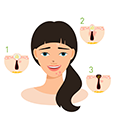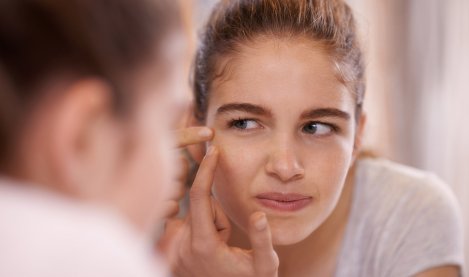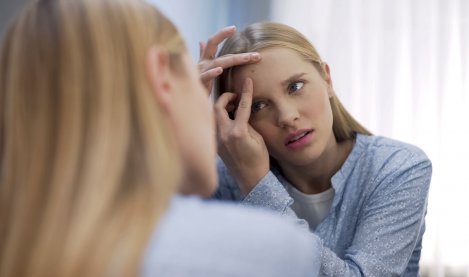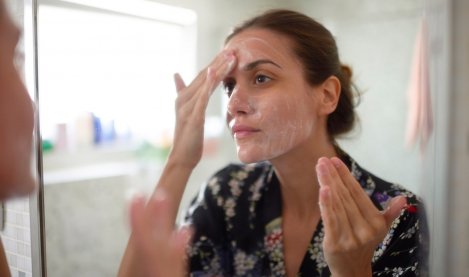Hygiene and cosmetic care
This is particularly important. Bacterial proliferation aggravates acne, which is why the skin needs to be thoroughly cleansed on a daily basis. But it should not be stripped!
- People with acne-prone skin should choose products that have been specifically formulated to prevent blemishes, such as foaming gels or micellar waters.
- Make-up removal is an essential step for all women, but especially those combating pimples and blackheads.
- When it comes to choosing make-up, watch out for high-coverage foundations and powders, which risk causing pimples. ‘Acne cosmetica’ is the term used by dermatologists to refer to acne that has been caused or aggravated by cosmetics.
The sun
The sun is most certainly not an ally for problem skin, even though it tends to dry out lesions at first. In reality, sun exposure thickens the skin, causing blemishes to be less visible. When the summer is over, patients experience the dreaded rebound effect, which is when numerous pimples reappear simultaneously. People with acne should therefore avoid over-exposure to UV rays. There are multiple sun care products that have been designed to protect acne-prone skin. Whether tinted or not, they can provide a matte finish and are capable of protecting and treating at the same time.
Diet
Diet has long been suspected of playing a role in acne. Studies are currently in progress to scientifically validate various hypotheses, but it is known that some people can reduce their acne by eliminating dairy products from their diet. Some experts claim that industrial processed foods high in fat and sugar, which tend to be very common in the diet of teenagers, contribute to the development of acne. So while it’s fine to eat burgers and tacos from time to time, they should be part of a balanced diet consisting of lots of fresh fruits and vegetables. Also remember to drink plenty of water, which has multiple health benefits for the skin.
Mobile phones
Mobile phones are an integral part of life for adolescents but are also highly effective bacterial vectors. They should thus be cleaned on a regular basis, keeping in mind that they are often stored in or placed on dirty surfaces (handbags, pockets, bar tables, floor for recharging, etc.). You can also use earphones or headphones to keep your phone from touching your cheeks.






